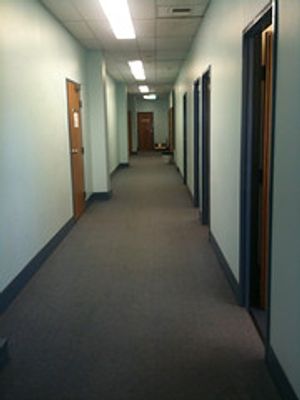beauty matters
published on
Why is it that institutions think that it's OK to position those who must participate in their business (as staff or students or patients etc) in soul destroying environments?
Day after day I walk down corridors and into rooms that do nothing but depress. Within these environments we expect people to thrive, to create, to innovate, to stay. If colour exists it's dirty orange or polyester blue like the uniforms that successfully lead to uniformity. Florescent lighting remains on 24/7, air conditioning recycles the years viruses and windows are dirty or non-existent. We sit children on plastic chairs that can be wiped with disinfectant although a child's natural position is on the floor. Hallways echo and lift-wells creak.
Very occasionally however you enter a space that inspires productivity and creativity and conversation. I entered an office like this this week. It wasn't expensively decorated. It had large windows that looked out onto trees and allowed natural light in, the windows opened to allow fresh air to enter, there were potted plants, a few prints on the walls, fresh clean colours, inviting workspaces that were comfortable and practical enabling personal work and collaborative conversations. It was a beautiful space.
We are burdened with the heritage of factory focused schools and workplaces and lecture theatres. Yet instead of redesigning and rethinking the spaces in which we learn and work, we continue to pump them out. The colours may be a little fresher but on the whole they do not change.
In a recent podcast Ken Robinson noted that if you are doing something that does not resonate, 5 minutes will feel like an hour. In the same way we cannot expect creativity, productivity, happiness, well-being, collaboration and innovation in toxic environments of ugliness. In fact for many jobs and tasks we should not be demanding face to face presence at all... but that's another post.